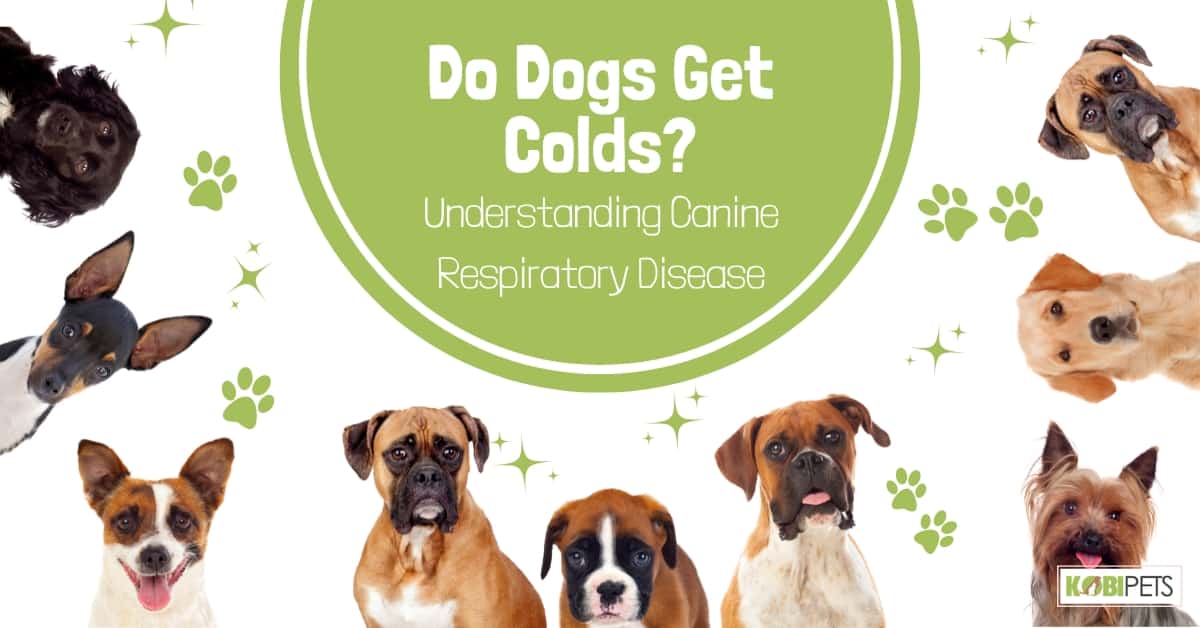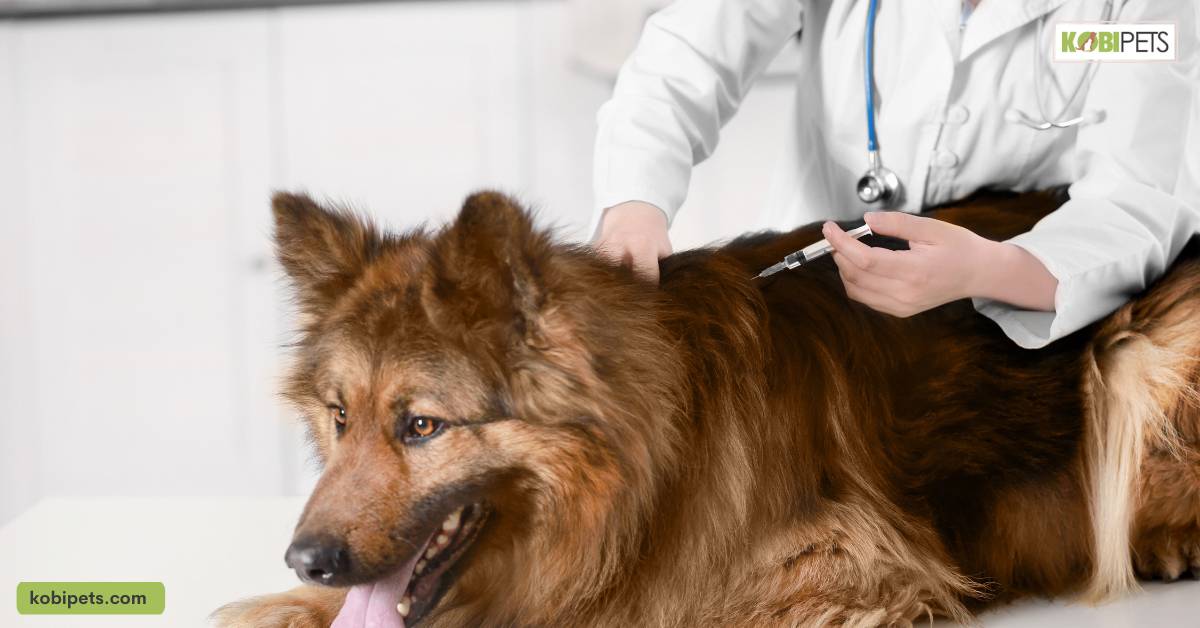
Canine respiratory diseases can be similar to human colds, but there are some key differences. While both illnesses have similar symptoms such as coughing and sneezing, canine respiratory diseases like Kennel Cough and Canine Influenza can cause more serious complications if left untreated.
In this blog post, we’ll explore some common misconceptions about canine respiratory diseases, the most common types of canine respiratory diseases, and the importance of prevention and early detection.
Common Misconceptions about Canine Respiratory Diseases
Canine respiratory diseases often strike fear in dog owners, and it is understandable why – these conditions can be dangerous to all breeds of dogs. Many people are under the misconception that canine respiratory diseases are infectious and unavoidable or that any health issues related to a dog’s lungs or airways can spell disaster for its life.
However, though these conditions can pose some risk factors, there are countless preventative measures that pet owners can take to aid their pet’s respiratory system and reduce the chances of developing a canine respiratory disease.
Fortunately, with proper medical care and prevention, most cases of canine respiratory illness can be managed successfully.
- Dogs don’t get colds – While humans may experience the common cold, dogs can also suffer from similar respiratory illnesses that are caused by viruses or bacteria.
- All respiratory diseases in dogs are the same – Canine respiratory diseases vary greatly and range from mild to severe depending on the type of disease and how quickly it is treated.
- Vaccination is the only way to protect against respiratory diseases in dogs – While vaccinations can help prevent certain types of canine respiratory diseases, it’s not the only line of defense. Other methods like proper hygiene and social distancing are just as important when it comes to preventing and controlling the spread of these illnesses.

Importance of Understanding Canine Respiratory Diseases
Understanding canine respiratory diseases are vital for veterinary professionals and pet owners alike. From kennel cough to infectious tracheobronchitis, recognizing high-risk areas, specific symptoms, and possible treatments plays a critical role in the diagnosis and management of respiratory diseases in canine patients.
By taking preventative measures such as establishing a proper vaccination schedule, social distancing outdoor furniture, and regular deep cleaning protocols, pet owners can minimize the risk of their beloved fur babies catching any respiratory illnesses.
Establishing adequate preventive healthcare in dogs does not only benefit the pet but their owner as well by promoting healthier habits for both animals and their humans.

Do Dogs Get Colds?
Canine Respiratory Diseases vs. Human Colds
Canine Respiratory Diseases are illnesses that specifically affect canine species, such as dogs and wolves. They are typically caused by a variety of factors, including viruses, bacteria, parasites, and even fungi.
These illnesses can vary greatly in severity depending on the cause and individual animal. In comparison to Human Colds, Canine Respiratory Diseases are much more virulent and can often be quite difficult to treat.
| Comparison | Human Cold | Dog Cold |
| Causative Agent | Various viruses, including rhinovirus and coronavirus |
Various viruses, including parainfluenza and canine adenovirus
|
| Transmission | Direct contact with an infected person, touching contaminated surfaces, and inhaling droplets from an infected person’s cough or sneeze |
Direct contact with an infected dog, touching contaminated surfaces, and inhaling droplets from an infected dog’s cough
|
| Symptoms | Sneezing, runny or stuffy nose, coughing, sore throat, body aches, headache, fatigue, and fever |
Sneezing, coughing, nasal discharge, reduced appetite, and fever
|
| Duration | 7 to 10 days | 7 to 14 days |
| Treatment | Over-the-counter cold medications, rest, and increased fluid intake |
Antibiotics, cough suppressants, and increased fluid intake (as directed by a veterinarian)
|
| Prevention | Wash hands frequently, avoid close contact with infected individuals and get flu shot |
Vaccination, prevent close contact with infected dogs and practice good hygiene
|
Symptoms of Canine Respiratory Diseases
Canine respiratory diseases are serious and potentially life-threatening conditions that require immediate attention. Common symptoms of this type of illness include coughing, sneezing, wheezing, nasal discharge, and difficulty breathing.
Pets often demonstrate a decrease in activity, and loss of appetite and may look depleted or have enlarged lymph nodes. If your pet is exhibiting any of these, it is immensely important to seek veterinary advice for diagnosis and necessary treatment.
- Coughing
- Sneezing
- Difficulty breathing (dyspnea)
- Wheezing
- Nasal discharge
- Lethargy and loss of appetite
- Fever
- Increased heart rate (tachycardia)
- Weight loss
- Reverse sneezing episodes (inspiration spasms)
- Exercise intolerance
- Blue or pale gums (cyanosis)
Common Types of Canine Respiratory Diseases
Kennel Cough
Kennel cough is the name given to an umbrella term for a group of upper respiratory ailments typically affecting dogs. It is one of the most common canine respiratory conditions, caused by a combination of bacterial and viral infections.
The most common symptom of kennel cough is a dry cough, which in some cases can manifest as a honking or gagging sound. In more severe cases, other symptoms include runny eyes and nose, loss of appetite, and fatigue.
While kennel cough often resolves on its own with supportive care, any persistent symptoms should be brought to your veterinarian for further evaluation as it could be indicative of more serious illnesses such as distemper or bronchitis.

Canine Influenza
Canine influenza is one of the most widely recognized types of canine respiratory diseases. It is a highly contagious respiratory infection that affects dogs and can be easily spread from one dog to another through physical contact, indirect contact with contaminated objects, and even through the air.
Several strains of canine influenza virus exist, and fortunately, all canines are vulnerable to only two of these viruses—H3N8 and H3N2. To reduce the spread of the virus, owners should ensure their pet is current on vaccinations while avoiding public places such as parks or dog shows where there may be a larger concentration of carriers.
As with any viral infection, early diagnosis increases the chance of successful treatment, so an owner should look out for signs like coughing, sneezing, fever, and discharge from the eyes or nose.
Ultimately, responsible pet owners need to remain vigilant by preparing their pets for possible environmental threats like canine influenza and protecting them from unnecessary exposure to potential sources of contagion.

Pneumonia
Pneumonia is a respiratory condition affecting dogs in which their lungs become inflamed, leading to a buildup of fluid and secretions. The disease has several potential causes, including bacteria, viruses, parasites, and other respiratory conditions such as kennel cough.
It can be challenging to diagnose in its early stages because the symptoms are often similar to those found in other canine respiratory diseases. There is no one-size-fits-all treatment; instead, the veterinarian treating the dog must consider the underlying cause of pneumonia before making recommendations for specific treatments.
Most cases can be successfully treated with antibiotics and supportive care, although hospitalization may be necessary in more serious cases.

Prevention and Treatment
Importance of Vaccination
Vaccinations play an important role in both the prevention and treatment of various diseases. By introducing a weakened or killed form of pathogens into the body, vaccinations give the immune system the opportunity to recognize and learn how to fight these illnesses.
Vaccines can correspond to anything from influenza viruses, tetanus, diphtheria, hepatitis A and B, measles, and more. Regular vaccinations are essential in order to build up immunity against these illnesses over time – this is especially true with children who may be unable to receive some treatments until their immune systems have had the opportunity to mature.
When it comes to treating existing diseases, there are several preventative vaccines that exist which can help lower the risk of severe symptoms or relapse after treatment has been completed. For example, HPV vaccination for cervical cancer. In other words, vaccines not only provide protection from contagious pathogens but also improve response rates to treatments as well.

Early Detection and Treatment
Early Detection and Treatment remain two of the primary strategies for the prevention and treatment of health conditions. Medical experts agree that when dealing with disease and illness, early detection enables healthcare providers to offer early treatment that can reduce or eliminate the severity of the conditions.
However, it may not always be possible to detect diseases early in their onset. A combination of prevention strategies such as screenings, immunizations, and proper medical procedures can help reduce risk factors.
Early Detection and Treatment are vital components of a comprehensive health strategy designed to maintain optimal well-being.

At-Home Care for Canine Respiratory Diseases
At-home care is a vital component when it comes to preventing and treating canine respiratory diseases. Caring for your pet at home can reduce exposure to any potential contagions and can be comforting for them.
It’s important for owners to provide additional hygiene, such as washing contaminated bedding or toys, and regular veterinarian care. Owners should also look for signs of infection such as coughing or nasal congestion that worsen over time.
If any of these signs are observed it’s important to contact your vet so further treatment can be provided. At-home care should also involve monitoring the medications prescribed by your vet and making sure they are taken as instructed.

In Conclusion
Canine respiratory diseases can range from mild to severe and affect all breeds of dogs. It’s important to recognize the most common types of canine respiratory diseases and take preventative measures to protect your pet.
Early detection and treatment are essential to fighting these illnesses and at-home care is essential for providing the best possible care. Taking all of these steps will help ensure your pet remains healthy and happy.






